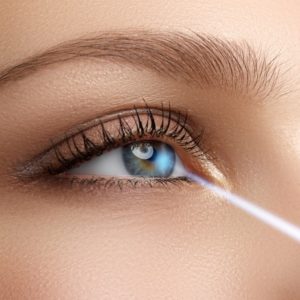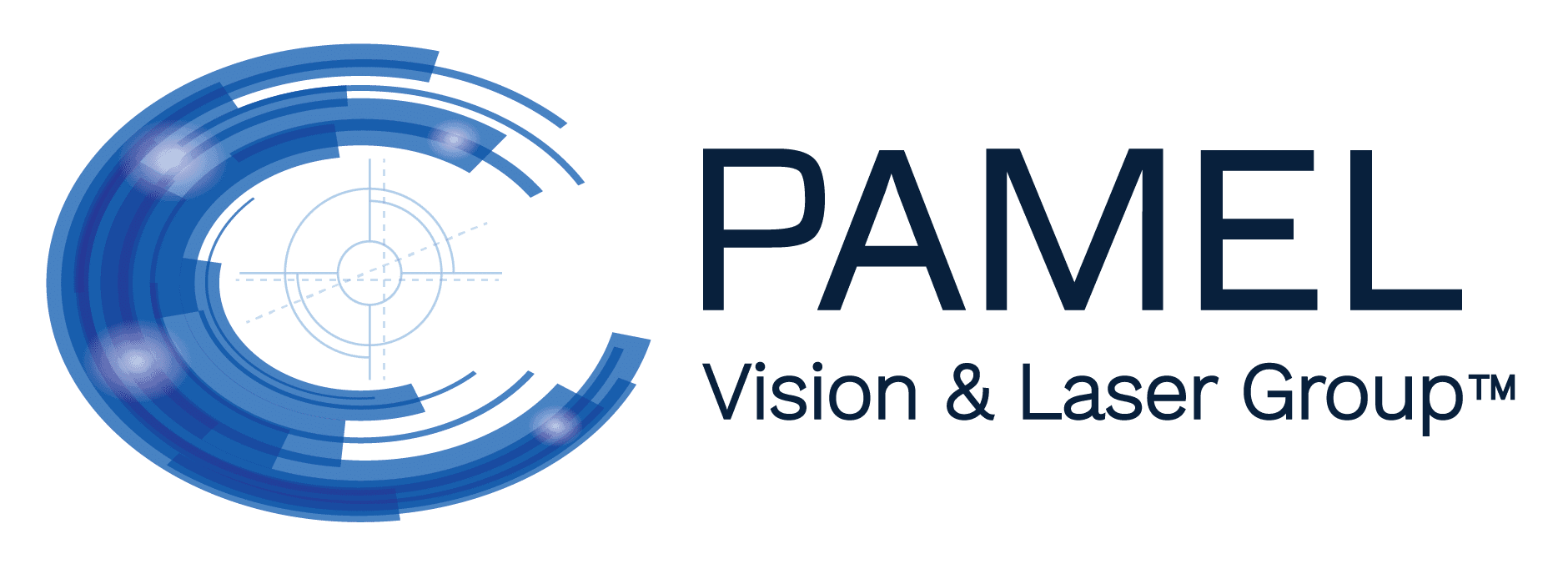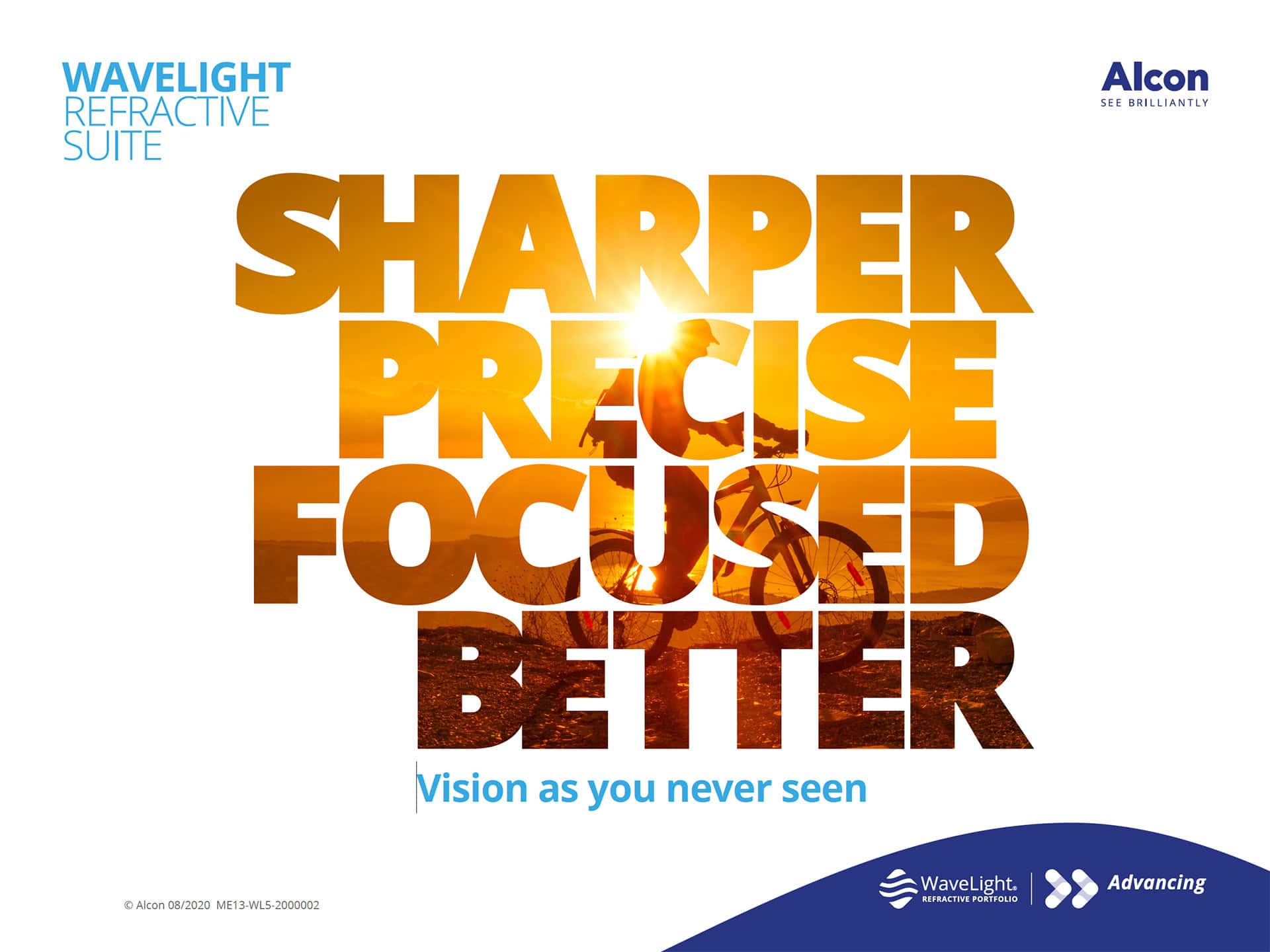Contoura Laser Vision Correction in NYC
Topography-Guided Laser Vision Correction
ContouraTM Vision – Topography-Guided Laser Vision Correction is the most precise and accurate form of laser vision correction approved by the FDA and available in the U.S. today. Instead of treating just the eyeglass prescription (low order aberrations) that is measured in the office, Contoura also treats the unique and minute imperfections that are unique to each patient’s corneal curvature (higher order aberrations). The combination of treating both the patient’s prescription and corneal imperfections result in a better focusing surface and enhanced vision.
Dr. Pamel is one of the first surgeons in the Northeast to offer Contoura™ Vision. He has been at the forefront of providing the most advanced laser vision correction options available any where in the U.S. He was the first surgeon in the Northeast to offer the Wavelight Platform in 2003 and has continued to upgrade his technology to the current Wavelight EX500- the most advanced excimer laser system available in the U.S.
 This laser system provides perfect communication between the measurements taken of the patient’s cornea and the treatment carried out by the Contoura software.
This laser system provides perfect communication between the measurements taken of the patient’s cornea and the treatment carried out by the Contoura software.
The data provided by the corneal topographer-called the Vario or topolyzer- measures the unique shape characteristics of the patient’s eyes. The patient’s eyes are imaged and analyzed before the day of treatment or on the day of treatment and 22,000 data points are sent to a surgical planning computer to create a customized treatment plan based on the shape of the patient’s cornea. This treatment plan is then sent to the Wavelight EX500 excimer laser system that under the guidance of Dr. Pamel, performs the treatment.
Not all patients will benefit from Contoura™ Vision and after analyzing the patient’s corneal map provided by the Vario corneal topographer, Dr. Pamel may decide that a more predictable result can be obtained with the Wavefront Optimized treatment.

 Gregory J. Pamel, M.D.
Gregory J. Pamel, M.D.
Dr. Pamel was recently honored as a board-certified fellow in the inaugural class of the World College of Refractive Surgery and Visual Sciences. Dr. Pamel was among 1000 surgeons worldwide out of 280,000 ophthalmologists to be unanimously selected for this achievement. He was recognized for his surgical expertise and contribution to the education and advancement of Refractive surgery over the last twenty years. This honor is a testament to Dr. Pamel's commitment to provide the highest quality vision correction surgery. Read more.





HOW CONTOURA VISION IS DIFFERENT From Other Custom Lasik treatments?
 Contoura™ Vision, which has been used safely and effectively outside the United States in Europe and Canada for more than 10 years, is a unique topography-guided LASIK procedure because of the way it maps the eye to guide treatment. It uses a topography instrument called the Vario Topolyzer to measure every submicroscopic peak and valley on the cornea, to a very precise degree.
Contoura™ Vision, which has been used safely and effectively outside the United States in Europe and Canada for more than 10 years, is a unique topography-guided LASIK procedure because of the way it maps the eye to guide treatment. It uses a topography instrument called the Vario Topolyzer to measure every submicroscopic peak and valley on the cornea, to a very precise degree.
While wavefront-guided LASIK can produce good results by measuring somewhere around 200 points of curvature on the cornea, Contoura Vision measures 22,000 points. That information allows a computer to create an individualized treatment profile, which is then programmed into a state-of-the-art laser that automatically applies the treatment to the cornea.
The laser normalizes the shape of the cornea so all of the light rays passing through it reach the retina at the back of the eye uniformly, producing clear, crisp vision. Contoura™ Vision is truly individualized. The topography measurements are so exact that it would be impossible for any two treatments to be the same.
Another difference between wavefront-guided and topography-guided LASIK is that wavefront measurements include all parts of the eye along the visual pathway, and topography measurements include only the cornea. This is important because the cornea is the location of most of the imperfections that can make vision less than ideal. While the lens of the eye can contribute to poor vision as well, it changes over time, which could work against the changes made to the cornea by LASIK.
 ContouraTM Vision – Topography-Guided Laser Vision Correction can optimize the surface of the eye’s cornea in such a way that it actually enhances the quality of vision better than has ever been possible before.
ContouraTM Vision – Topography-Guided Laser Vision Correction can optimize the surface of the eye’s cornea in such a way that it actually enhances the quality of vision better than has ever been possible before.
In clinical studies, ContouraTMVision – Topography-Guided Laser Vision Correction helped 90% of patients see as well or better without glasses than they did with glasses. It can benefit patients in a number of ways, helping them obtain a better quality of vision and reducing the potential for night glare.
Who is a candidate for Contoura™ Vision-Topography-Guided Laser Vision Correction?
Candidates for this advanced technique include patients who:
- Are at least 18 years of age or older
- Have a stable corrective eyeglass or contact lens prescription
- May have up to but no more than 8 diopters of myopia
- May have up to but no more than 3 diopters of astigmatism (or up to 9 diopters of myopia and astigmatism combined)
During the initial LASIK consultation and eye evaluation at Pamel Vision and laser Group, Dr. Pamel will determine Lasik candidacy and decide if Topography-Guided Laser Vision Correction is the best treatment that will provide the best outcome and best quality of vision.
At Pamel Vision and Laser Group, LASIK does not just mean one size-fits-all LASIK. We have two different laser profiles that are used in order to achieve the very best possible result for your procedure: 1) Wavefront-Optimized treatment; 2) Contoura™ Vision (treatments customized by topographic data from the Vario Topolyzer Unit). Contoura™ Vision is the latest innovation from WaveLight and the recent FDA study approval is based on the best results yet seen in an FDA study on laser vision correction.
Wavelight Contoura™ in Eyes that have previously undergone LASIK or in Eyes that have Irregular Corneas
Wavelight Contoura™ can also treat eyes that have already undergone lasik and have irregularities in the cornea that have resulted in a reduction in the quality of vision and in side effects.
 These side effects include glare, halos, ghosting of images and blurred vision. Patients with these side effects may be candidates for a topography-guided laser vision enhancement to eliminate the irregularities in the cornea which could be responsible for the symptoms. These would be considered off-label treatments but they have been performed all over the world and clinical data have shown improved outcomes in select patients.
These side effects include glare, halos, ghosting of images and blurred vision. Patients with these side effects may be candidates for a topography-guided laser vision enhancement to eliminate the irregularities in the cornea which could be responsible for the symptoms. These would be considered off-label treatments but they have been performed all over the world and clinical data have shown improved outcomes in select patients.
In addition, patients who have keratoconus or post lasik ectasia may also be candidates for Contoura™ Vision treatment. Please click onto our keratoconus sections.
Summary From THe FDA TRIALS with Wavelight Contoura™:
In the clinical trial that led to FDA approval of Contoura™ Vision:
- 98% of people who had the procedure said they would choose it again.
- 30% of eyes had better vision without glasses or contacts after the procedure than they had with glasses or contacts before the procedure.
- The procedure reduced complaints of glare and decreased sensitivity to light, difficulty reading, and difficulty driving at night compared with what patients were previously experiencing before surgery.
- While 20/20 is considered normal vision, and 92% of patients had 20/20 or better vision after their Contoura™ Vision procedure, 65% of patients achieved 20/16 vision, and 34% achieved 20/12.5 (Eagles are thought to have 20/5 vision; hawks as good as 20/2.)
- The results in nearly every patient, outperformed glasses and contact lenses for many patients, and moved some patients closer to “eagle eye” vision than ever thought possible.
WHAT CONTOURA™ VISION Topography-Guided LASIK HAS IN COMMON WITH OTHER TYPES OF LASIK Procedures
All LASIK treatments are applied underneath a corneal flap that is created by using a femtosecond laser. Dr. Pamel utilizes the Ziemer femtosecond laser which is one of the most advanced laser used in ophthalmology. Femtosecond lasers are so fast that their speed is measured in quadrillionths of a second. They create the LASIK flap to precise dimensions so it conforms to your eye’s anatomy, is less disruptive to the delicate corneal tissue, and fits securely back in place after the treatment.
Also at Pamel Vision and Laser Group, the same German-engineered laser, the Wavelight EX 500 laser, is used to apply the planned treatment to the cornea in all types of LASIK. In addition to applying an accurate treatment, this laser places its pulses in a way that preserves the natural curvature of the cornea, which is important for preventing unwanted side effects such as glare and poor night vision. A 500Hz laser tracks even the slightest of eye movements during the procedure to ensure the exact intended location of the treatment is maintained.
Schedule your free consultation today with Dr. Pamel to see if you’re a candidate for Contoura™ Vision topography-guided lasik.
Important Information about Contoura Vision
 Currently the FDA has approved Contoura Vision for a wide, yet specific, range of nearsightedness and astigmatism. To undergo the procedure your vision needs to fall within that range. That is determined during a thorough eye examination. At this time, you may not qualify for topography-guided LASIK if you’ve had previous eye surgery.
Currently the FDA has approved Contoura Vision for a wide, yet specific, range of nearsightedness and astigmatism. To undergo the procedure your vision needs to fall within that range. That is determined during a thorough eye examination. At this time, you may not qualify for topography-guided LASIK if you’ve had previous eye surgery.
You also may not be able to have the procedure if you have certain ocular or systemic conditions or diseases or are pregnant or breast-feeding.
If you’re not a candidate for Contoura Vision LASIK, you may be able to have wavefront-optimized LASIK. During your consultation with Dr. Pamel, you’ll learn about all of the vision correction options, LASIK and otherwise, that may be right for you. Like any surgery, Contoura Vision has risks as well as benefits, which will also be explained to you during your consultation.






